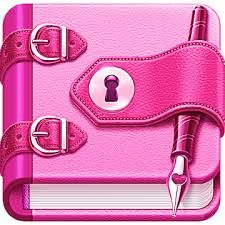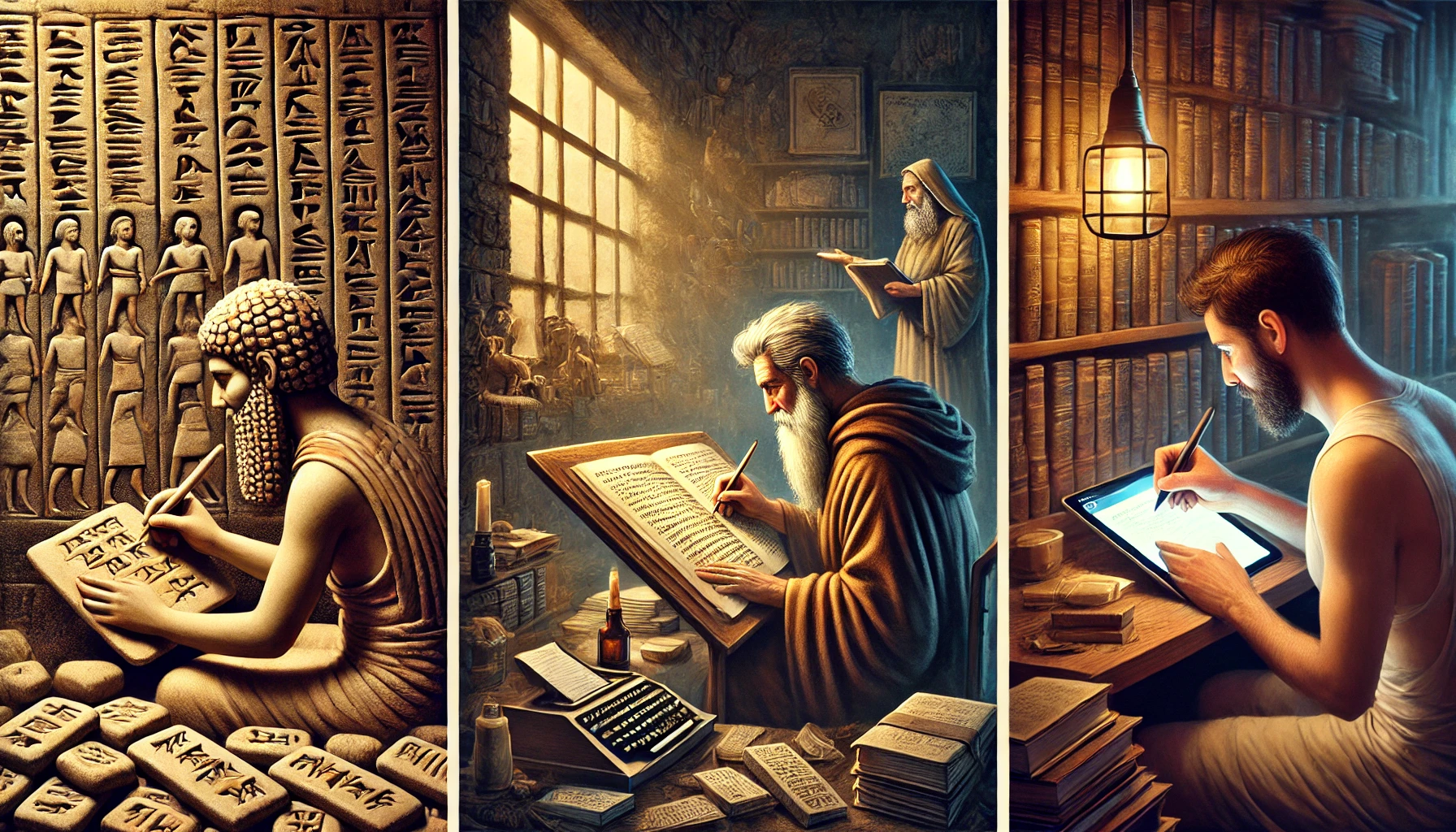Imagine holding in your hands the very first diary ever written. What would it look like? Would it be filled with secret crushes and daily drama like many of our journals today? Well, you might be surprised to learn that the earliest “journals” were actually written on clay tablets by ancient merchants counting their sheep! Let’s dive into the fascinating 5,000-year story of how journaling evolved from simple counting to becoming one of humanity’s most powerful tools for self-expression.
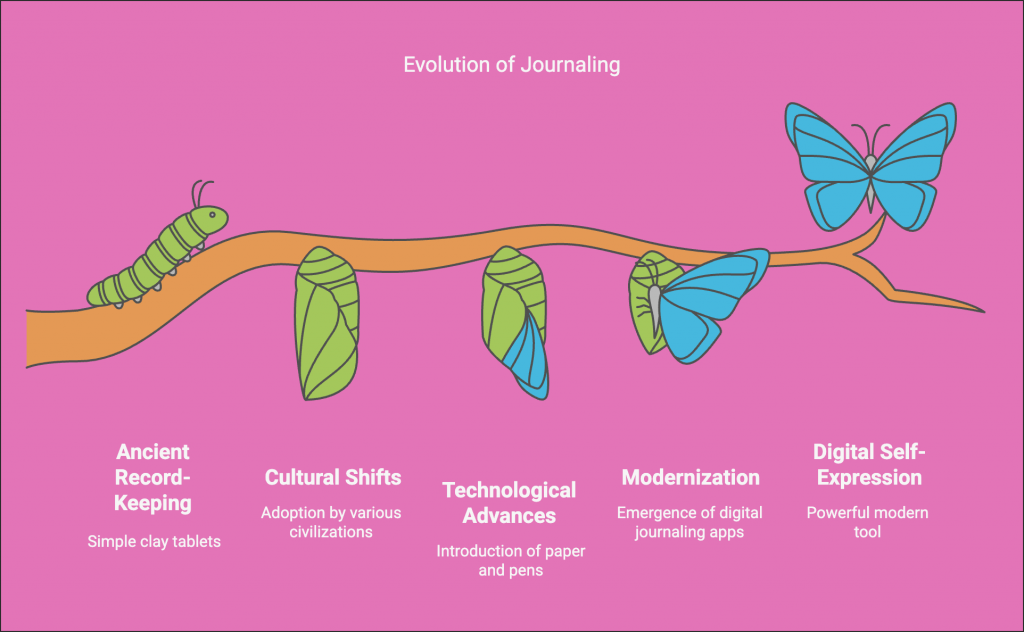
Chapter 1: The First Journal Writers (3400-3100 BC)
Picture this: You’re in ancient Mesopotamia, where the first people to write something like a journal weren’t teenagers – they were accountants! Using sharp reeds to make marks in wet clay, these ancient scribes kept track of how many sheep, grain, or jugs of beer people owned. But here’s where it gets interesting: sometimes, these scribes would sneak in personal notes, like complaining about the quality of their beer rations or bragging about a really good trade deal. Think of it as the ancient version of adding emojis to your homework!
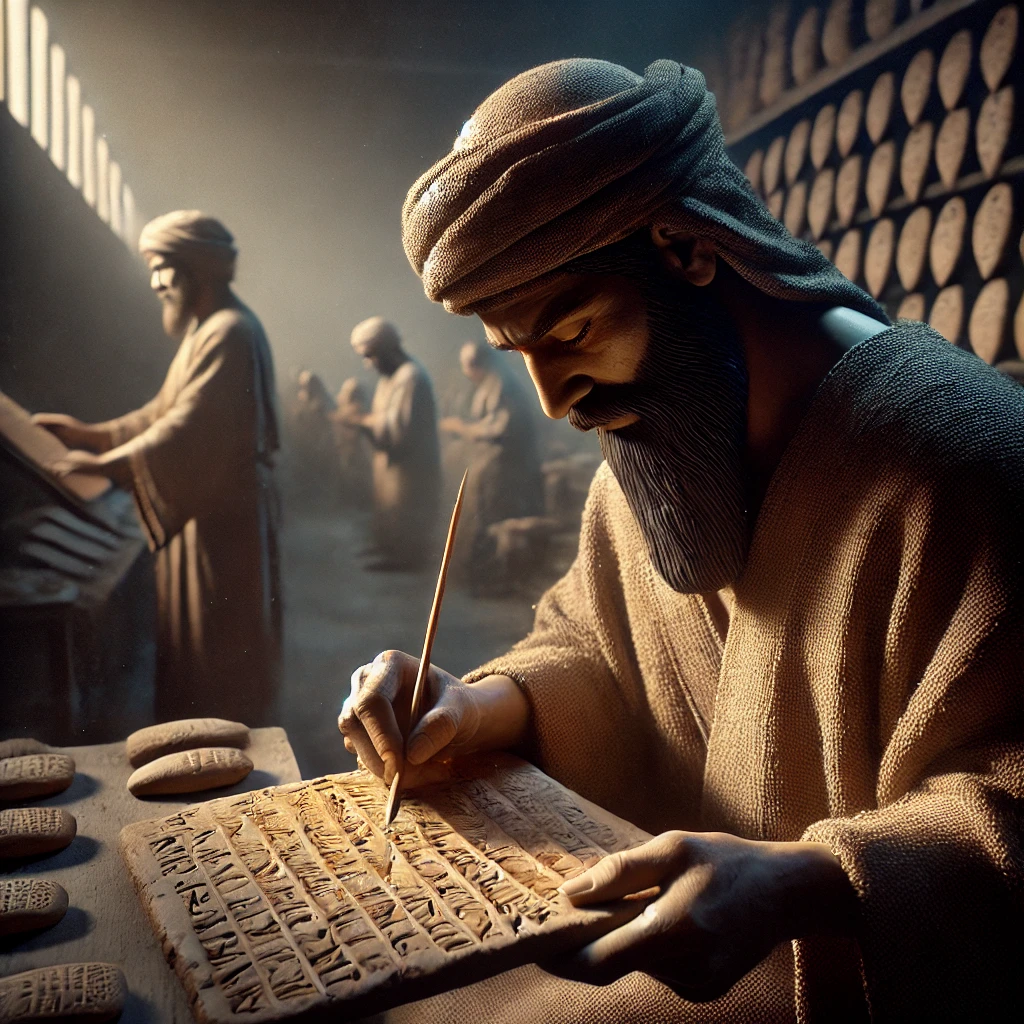
Chapter 2: The Pyramid Builder’s Journal
One of the coolest early journals we’ve found belonged to someone named Merer, who lived around 2570 BC. His journal wasn’t about his feelings – it was about helping build the Great Pyramids! He wrote down details about shipping limestone blocks down the Nile River. Imagine having “Helped build one of the Seven Wonders of the World” in your diary!
Chapter 3: The Emperor’s Private Thoughts
Fast forward to around 170 AD, when Roman Emperor Marcus Aurelius wrote something revolutionary. Instead of just listing what happened each day, he started asking himself deep questions about life and how to be a better person. He titled his journal “To Himself” (way more original than “Dear Diary”!), and it became famous as “Meditations.” Think of him as the first person to turn his journal into a place for self-improvement and deep thinking.
Chapter 4: Monks and Their Chronicles
During the Middle Ages, monks in European monasteries became the world’s most dedicated journal keepers. They wrote about everything from the weather to Viking raids! One group project, called the Anglo-Saxon Chronicle, was like a medieval news feed that kept track of everything happening in England.
Chapter 5: Leonardo da Vinci’s Amazing Notebooks
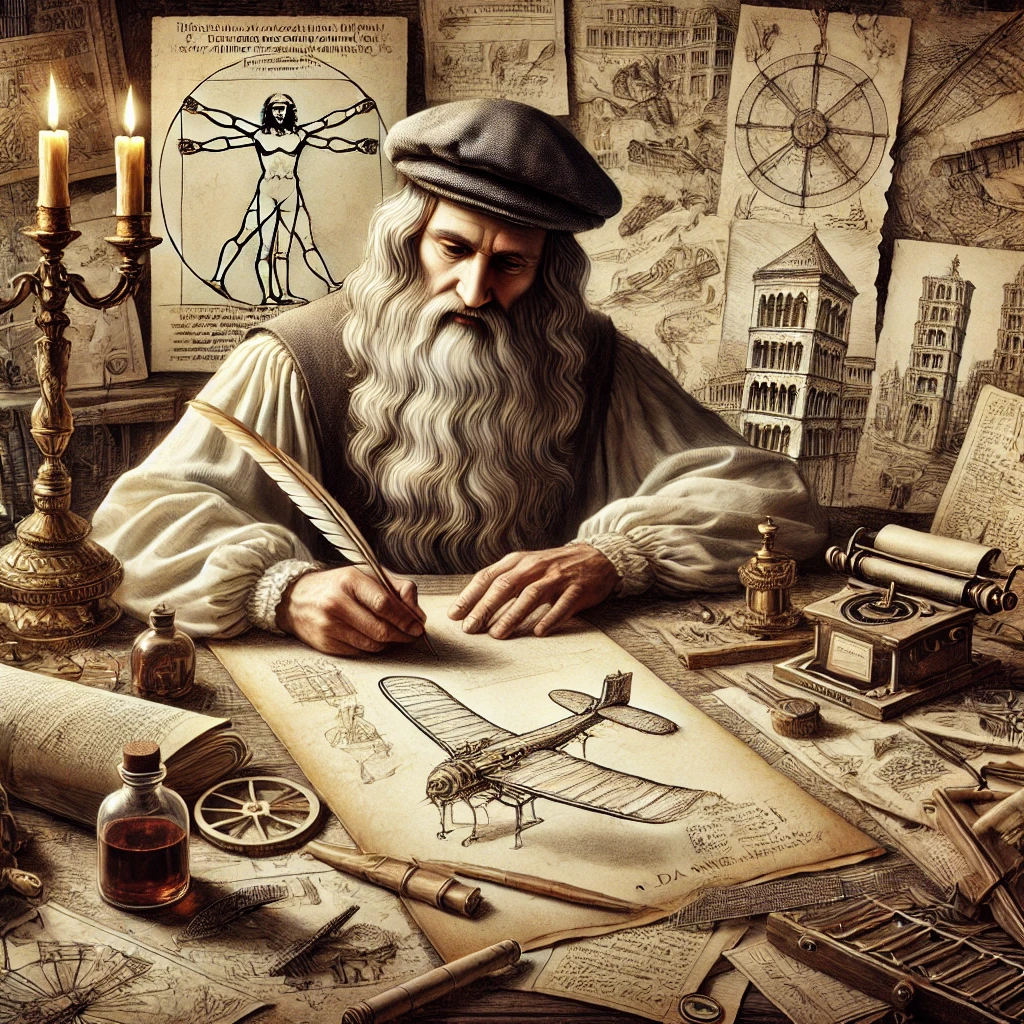
The Renaissance brought us one of history’s coolest journal keepers: Leonardo da Vinci. His notebooks were filled with incredible drawings of flying machines, human anatomy, and his random thoughts about everything under the sun. He even wrote in mirror writing (you’d need to hold it up to a mirror to read it) to keep his ideas secret! His motto was “Learn how to see” – something that’s still super relevant for journal writers today.
Chapter 6: Journals That Changed History
During the Age of Exploration, journals became super important for recording new discoveries. Christopher Columbus kept a detailed diary of his voyage to America (though he sometimes exaggerated to impress his royal sponsors – medieval clickbait, anyone?). Later, Benjamin Franklin used his journal to plan how to become a better person, creating what might have been the world’s first self-improvement diary.
Chapter 7: Secret Wartime Diaries

One of the most powerful journals ever written came from one of history’s darkest times. During World War II, Anne Frank wrote her diary while hiding from the Nazis. Her journal showed the world that diaries aren’t just about recording daily life – they can be powerful tools for sharing important stories and helping people understand history through personal experiences.
Chapter 8: The Rise of Creative Journaling
The 20th century saw journaling become more creative and personal than ever. Writers like Anaïs Nin showed that journals could be works of art. She famously wrote, “I write to taste life twice” – once when it happens, and again when writing about it. How cool is that?
Chapter 9: Journals Go Digital
The internet changed everything! In 1999, LiveJournal launched, letting people share their thoughts online. Then came blogs, Twitter, WriteDiary and apps like Day One and Diary with lock. Suddenly, journaling wasn’t just private anymore – it could connect people from all over the world who shared similar experiences and interests.
Chapter 10: The Future of Journaling
Today, journaling has evolved into something our ancient Mesopotamian friends could never have imagined. Some modern journals can track your mood, location, and even connect with your fitness data! But despite all this technology, the basic idea remains the same: creating a space to record your thoughts, feelings, and experiences.
Whether you prefer a traditional notebook or a digital app, you’re part of a tradition that’s older than the pyramids. Every time you write in your journal, you’re joining a chain of human expression that stretches back 5,000 years. Your journal isn’t just a place to write about your day – it’s your personal contribution to this amazing human story.
So next time you open your journal, remember: you’re not just writing for yourself. You’re participating in one of humanity’s oldest and most meaningful traditions. Who knows? Maybe 5,000 years from now, someone will be fascinated by the stories we’re writing today!
Want to start your own journaling journey? Remember, there’s no “right” way to keep a journal. Whether you write about your daily life, your dreams, or even count sheep like those ancient Mesopotamians, you’re now part of this incredible historical tradition!
Sources:
- https://en.wikipedia.org/wiki/History_of_writing
- https://epica.com/blogs/articles-by-epica/the-astonishing-history-of-journaling
- https://journal-notebooks.gitbook.io/wiki
- https://seethehappy.com/2016/09/journal-writing-leaving-your-personal-history/
- https://stationerysnobs.com/history-of-journaling/
- https://vmfa.museum/learn/resources/ancient-writing
- https://www.createwritenow.com/journal-writing-blog/journaling-a-historical-perspective
- https://www.diaxna.com/diaxna-blog/the-history-of-journaling-and-its-evolution
- https://www.facinghistory.org/ideas-week/historical-diaries-journals-peoples-history
